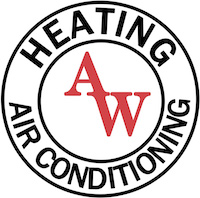
If you’re needing air conditioner installation in Lincoln, you should also be considering your new air conditioner’s SEER rating.
SEER means Seasonal Energy Efficiency Rating. In a nutshell, it measures how efficient your air conditioner is at converting electricity into cooled air. A bigger number indicates your air conditioner is more efficient, which is good for your electrical costs.
However, there are lots of differing solutions on the market for air conditioners. And a better SEER rating typically is accompanied by a higher cost. So, how can you determine which one is right for your home?
At AW Heating & Air Conditioning, we give you a free, no-pressure home comfort analysis. You can book one by contacting us at 402-438-7992. Our skilled air conditioner installers will work with you to help you pick the right air conditioner for your home. Plus, they’ll also offer you a free, no-obligation estimate.
For the time being, let’s discuss SEER ratings and how they can impact your loved ones’ comfort. And your electrical bills.
Why Do the SEER Ratings Really Matter?
In 2016, the federal government created new SEER criteria. New air conditioners are mandated at baseline 13 SEER in the north United States and 14 SEER in the southeast and southwest. If you’re unsure when you had your air conditioner installed or what its SEER number is, you can look at the sticker on the condenser outside your house. If you can’t see the sticker, you can get in touch with us at 402-438-7992 for assistance.
If your air conditioner was installed prior to that year, it’s presumably much less efficient. Air conditioner technology has swiftly changed in the past few years, with major advances in energy efficiency and smart home compatibility. Using your new air conditioner with a smart thermostat could help you spend less on cooling bills, as the thermostat can intuitively change your temperature settings when you’re gone.
If your current air conditioner has a SEER rating between 8 and 10, getting a 14-SEER system could save you close to 30–50% on annual cooling expenses. Your savings are tied to your air conditioner size and your temp settings.
Is the Higher the SEER the Better?
An air conditioner with a greater SEER rating will be more efficient at converting electricity for cooling. The highest efficiency systems, which can go as big as 26 SEER, have ENERGY STAR® endorsement. This certification signifies the air conditioner matches EPA rules for energy savings and environmental conservation.
While ENERGY STAR air conditioners are often more costly, you’ll usually get the difference back over time through reduced utility bills. These air conditioners, which are usually rated 16 SEER and greater, consume about 8% less electricity than other new models, according to ENERGY STAR.
One of the largest differences between a 14 SEER and 16 SEER is variable-speed technology. A variable-speed air conditioner can cool at a number of speeds. This refines comfort for your loved ones while keeping your air conditioning expenses down. It can also keep temperatures and humidity more even, since it can operate for longer without consuming a lot more power.
When buying a variable-speed air conditioner, you’ll want to check that your furnace or air handler is compatible. This is due to the fact your air conditioner depends on this system’s blower to send chilled air across your house. Furnaces only last for about 20 years, so if yours is around that age, we suggest getting furnace installation at the same time so you can get all the perks of your variable-speed air conditioner.
When you’re set to replace your air conditioner, the cooling specialists at AW Heating & Air Conditioning are ready to assist you. Call us at 402-438-7992 to set your free home comfort analysis now.


